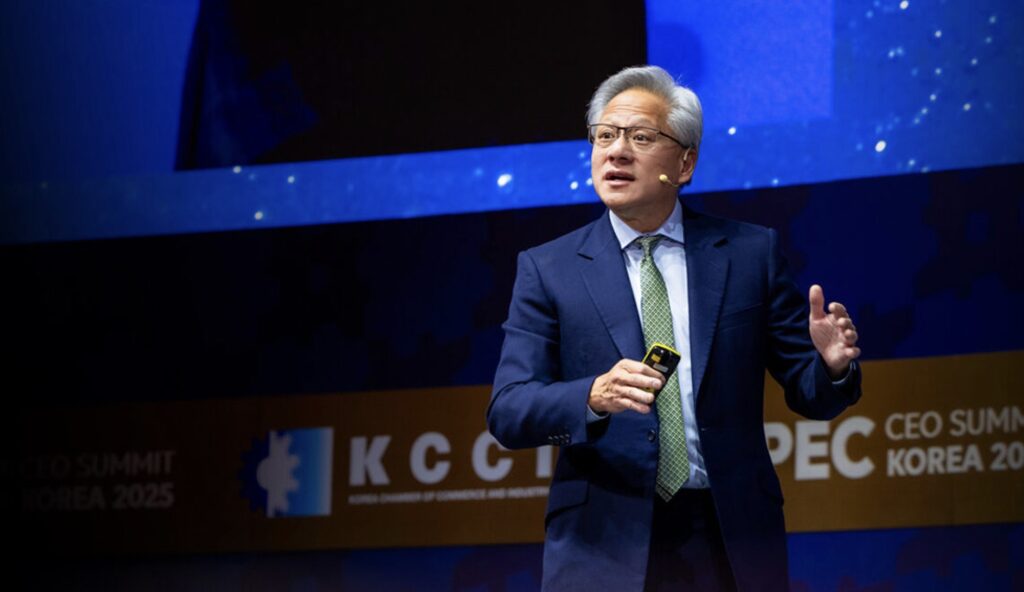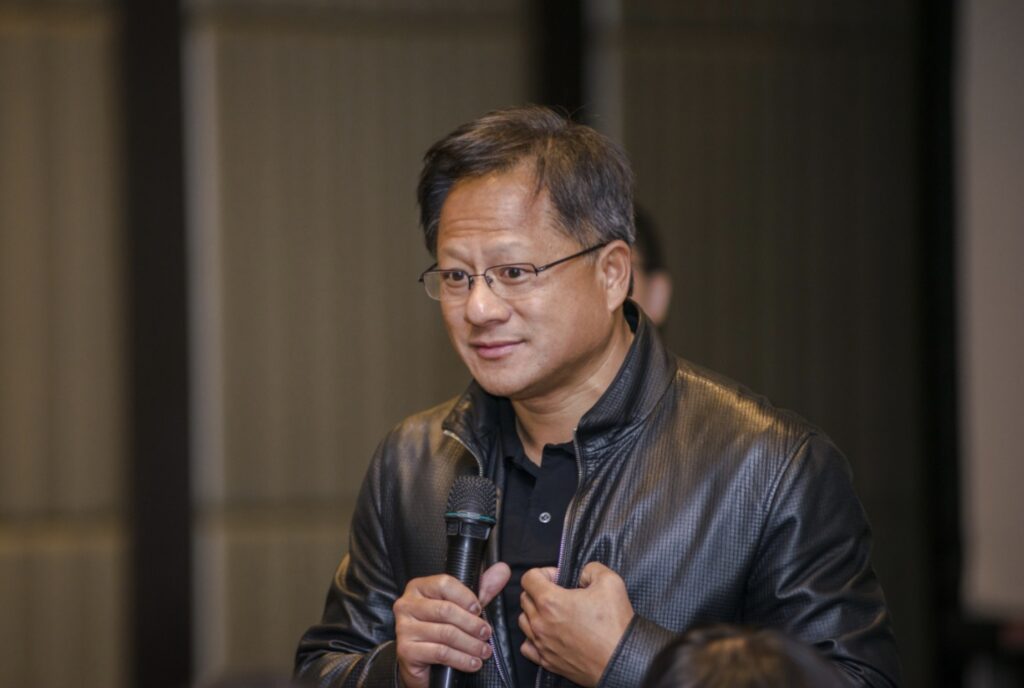The Tech Visionary Dismisses Uncontrollable AI as a Hollywood Plot, Betting on a Collaborative Future Instead
- Sci-Fi Skepticism: Nvidia CEO Jensen Huang brushes off concerns about runaway AI as mere fiction, emphasizing real-world benefits over dystopian fears.
- Nvidia’s AI Dominance: As the world’s leading AI infrastructure provider, Nvidia is powering global advancements, including massive GPU deployments and collaborations with governments like South Korea.
- Physical AI and Human Synergy: Huang highlights AI’s role in robotics and industries, predicting it will enhance human capabilities rather than replace them, fostering growth in sectors like manufacturing and autonomous tech.
In an era where artificial intelligence has exploded into everyday life, sparking both excitement and apprehension, Nvidia‘s CEO Jensen Huang offers a refreshingly optimistic take. Nearly three years after ChatGPT‘s launch democratized AI access—turning it into a go-to tool for everything from casual queries to creative writing—debates about its potential dangers have intensified. Studies reveal that about 80% of ChatGPT interactions involve simple tasks like seeking information or drafting text, making AI feel like a helpful sidekick for the average user. Yet, when AI ventures into high-stakes arenas with real-world consequences, such as healthcare or finance, caution turns to outright fear. Enter Huang, who, during a recent press conference, likened these worries to something out of a science fiction novel, providing a counterpoint to more alarmist voices like Elon Musk, who has warned that AI could eventually take charge—albeit hopefully in a “friendly” way.
Huang’s comments came at the APEC 2025 Korea event in late October, held in the historic city of Gyeongju, South Korea. This wasn’t just a casual chat; it was a platform for Nvidia to showcase its pivotal role in the AI landscape. In a Q&A session captured by Korean outlet Quasar Zone, Huang directly addressed concerns from academics and experts about “uncontrollable AI.” His response was blunt and reassuring: “It’s a science fiction novel.” As the president, CEO, and co-founder of Nvidia, Huang isn’t one to downplay his company’s influence. He boldly stated that Nvidia is “the world’s leading AI infrastructure technology company. It’s miles ahead of its competitors,” a claim backed by the company’s dominance in GPU technology, which powers everything from data centers to advanced AI models. However, he acknowledged rising challengers, such as China’s Huawei, noting the competitive heat in the fast-evolving field.
This optimism isn’t just talk—it’s backed by action. Huang’s visit to Gyeongju centered on Nvidia’s collaboration with the Korean government to supercharge the region’s AI ecosystem. The company plans to deploy a staggering 260,000 GPUs next year, starting with the construction of an “AI factory” to house them. This move underscores Nvidia’s strategy to build robust infrastructure that can handle the computational demands of next-generation AI. From a broader perspective, such initiatives highlight how AI is reshaping global economies. Countries like South Korea, with strengths in shipbuilding, vehicle manufacturing, and semiconductors, stand to gain immensely. Huang’s vision positions AI not as a threat, but as a catalyst for innovation, potentially creating jobs and boosting productivity in ways that echo the industrial revolutions of the past.

Beyond infrastructure, Nvidia is diving deep into robotics, a domain Huang dubs “Physical AI.” This isn’t about creating humanoid robots to usurp human roles; instead, it’s focused on developing software and AI platforms that enable smarter machines. Physical AI, as Huang describes it, involves systems that grasp fundamental laws of nature—like causality, universal gravitation, and momentum—applying them to real-world applications such as autonomous driving and industrial automation. “These are also areas where Korea excels,” he noted, expressing confidence in the nation’s growth potential. Crucially, Huang emphasizes synergy over substitution: “It won’t replace humans. There are still things humans excel at.” This perspective broadens the AI conversation, shifting focus from replacement fears to collaborative possibilities. Imagine AI handling repetitive, dangerous tasks in shipyards or factories, freeing humans for creative problem-solving— a harmonious blend that could redefine industries worldwide.
Of course, Huang’s positivity comes amid a booming market for AI hardware, where Nvidia continues to lead. With deals season in full swing, consumers are snapping up discounted tech that fuels this AI revolution. For instance, the ASUS TUF NVIDIA RTX 5080 has dropped from $1,599 to $1,349, while the ASUS TUF RTX 5070 Ti is now $849 from $999. Monitors like the ASUS TUF ROG Strix XG27ACS are available for $329 (down from $349), and even TVs such as the TCL 43S250R Roku TV 2023 are slashed to $199 from $279. Gaming rigs aren’t left out— the Thermaltake LCGS Gaming PC is now $1,599 (was $1,799), and premium displays like the Samsung Odyssey G9 (G95C) have fallen to $1,000 from $1,299. Other steals include the Alienware AW3423DWF at $549 (from $699), the Samsung 77-inch OLED S95F at $3,497 (from $4,297), and the ASUS ROG Strix G16 laptop at $1,350 (from $1,499). These savings reflect the growing accessibility of AI-capable hardware, making Huang’s vision more attainable for everyday users and businesses alike.
In the grand scheme, Huang’s dismissal of AI doomsday scenarios invites us to reconsider our fears. While skeptics draw from sci-fi tropes of rogue machines, the reality—fueled by Nvidia’s innovations—points to a future where AI amplifies human potential. From powering chatbots that assist in daily tasks to enabling robotic systems that tackle complex physical challenges, AI’s trajectory seems geared toward enhancement, not domination. As collaborations like Nvidia’s Korean venture demonstrate, the key lies in strategic investments and ethical development. So, perhaps it’s time to set aside the Hollywood scripts and embrace AI as a partner in progress—one that’s already transforming the world, one GPU at a time.

